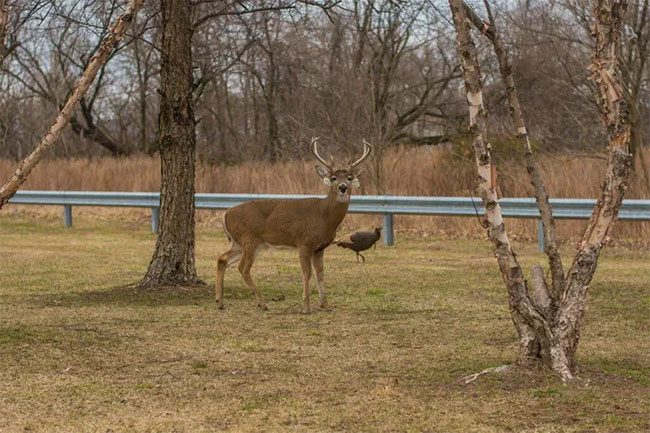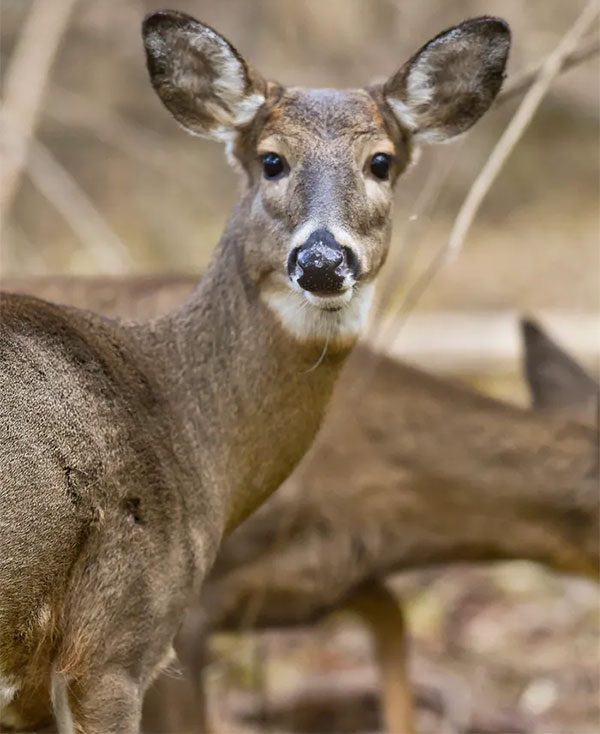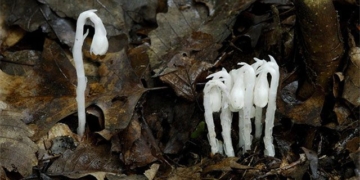White-tailed deer on Staten Island, New York, are the first wildlife to be infected with the Omicron variant. Currently, 15 states in the U.S. have reported deer infected with the coronavirus.
According to the New York Times, these findings add further evidence that white-tailed deer are highly susceptible to the virus. This outcome raises concerns that deer—species that are widely distributed across the U.S. and often near humans—could become reservoirs for the virus and a source of new variants.
Previous studies have shown that the coronavirus spread among deer in Iowa at the end of 2020 and in several areas of Ohio in early 2021.
15 States with Infected White-tailed Deer
U.S. Department of Agriculture spokesperson Lyndsay Cole confirmed that 13 other states have reported deer infected with the coronavirus: Arkansas, Illinois, Kansas, Maine, Massachusetts, Minnesota, New Jersey, New York, North Carolina, Oklahoma, Pennsylvania, Tennessee, and Virginia. These animals are infected with different variants of the virus.
A new study, yet to be published in a scientific journal, is being conducted by a team of experts from Penn State, the nonprofit organization White Buffalo, and the New York City Department of Parks and Recreation. From mid-December 2021 to the end of January, field staff collected blood samples from 131 deer, as well as nasal and tonsil swabs from other animals.

White-tailed deer on Staten Island, New York, are the first wildlife to be infected with the Omicron variant. (Photo: NY Times).
The authors found that nearly 15% of the deer had antibodies against the coronavirus in their blood, indicating prior infection with the virus. The rRT-PCR test of nasal swabs from 68 deer revealed that 7 were infected with the coronavirus, notably, at least 5 samples were positive for Omicron.
The authors caution against drawing deeper conclusions based solely on one deer. They do not rule out the possibility that it developed those antibodies during the spread of the virus in the community. Additionally, they may be reinfected multiple times with new variants, increasing the risk of becoming a reservoir for the virus.
The research indicates that white-tailed deer can contract the virus from humans and then spread it to other animals. Currently, there is no evidence that they transmit the coronavirus back to humans. However, the widespread and prolonged presence of the virus in deer could provide opportunities for the coronavirus to mutate more, increasing the chances of new variants emerging that could infect humans or other animals.
Microbiologist Vivek Kapur from Penn State, a member of the research team, stated: “The transmission of the virus in deer creates opportunities for them to adapt and evolve. There is a possibility that the virus could come back to haunt us in the future.”
Experts also found a deer infected with the Omicron variant had a high level of antibodies against the virus, suggesting it may have been infected previously. Omicron has been warned to potentially evade some of the immune defenses in humans. If it exhibits similar behavior in deer, previously infected animals may have a high risk of reinfection with COVID-19. Meanwhile, many researchers believe that the spread of the Omicron variant in the white-tailed deer population is not surprising.
The Mystery
According to microbiologist Suresh Kuchipudi from Penn State, the lead researcher, this could be an endless cycle for deer, where the virus continuously “jumps back and forth” among individual animals and selects for new variants.
The mechanism by which humans transmit the virus to deer remains a mystery. Researchers note that humans may transmit the coronavirus directly to animals by feeding deer by hand in parks and yards or indirectly through contaminated wastewater and trash.
Dr. Mubareka emphasized the need to closely monitor deer on Staten Island to determine how the Omicron variant evolves, whether it spreads to other wildlife species, and the level of disease it causes. When infected with previous variants, deer showed no symptoms of illness.

There are still many mysteries surrounding white-tailed deer and some wildlife infected with the new nCoV variant. (Photo: NY Times).
The authors also hope to conduct more laboratory studies on the antibodies they discovered in the deer on Staten Island. The goal is to determine the version of the virus that each deer was infected with and whether the level of antibodies can protect against other variants. For instance, can a deer infected with the Delta variant be reinfected with that variant, and can it defend against Omicron? Conversely, can a deer infected with Omicron be protected from Delta?
“These are all open questions. We are completely new to tracking nCoV infections in nature. That’s why we need to monitor more and collect more samples,” said ecologist Kurt Vandegrift from Penn State, a member of the research team.
Meanwhile, the expert team reassures New Yorkers not to panic. Additionally, we need to maintain a safe distance from wildlife, not only to prevent the transmission of the coronavirus but also many other viruses and infectious diseases.
Experts emphasize that the best way to prevent deer from becoming reservoirs for the virus is to limit its spread in humans. The detection of the Omicron variant in deer “is a reminder and a call to action that the pandemic is not over yet.”



















































